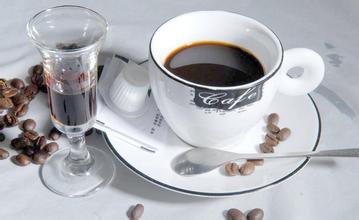Introduction to the method of evaluating the proportion of gouache in Italian espresso
Introduction to the method of evaluating the proportion of gouache in Italian espresso
For example, if you walk into the Vivace Espresso coffee shop in Seattle, USA, you usually get a cup of espresso with a gouache ratio of between 1:1 and 1. 5. The coffee shop's founder, David Schomer, was a pioneer in the Italian espresso industry at the time, bringing the coffee to the northwestern United States for the first time. Italian espresso is extremely strong and thick, but lacks purity and dryness. Extremely low gouache ratio, coupled with deep-roasted, low-altitude grown coffee beans, the resulting coffee chocolate and caramel flavor is very strong. When Xiao Mo first introduced this kind of coffee to the United States, Americans still drank coffee with milk. This very strong espresso brings a new coffee experience to the local people.
As light-roasted, high-altitude coffee has become more popular in the past few years, the proportion of water popular on the market has also changed. Today, coffee shops in the United States, Europe and Australia are accustomed to using the gouache ratio of "Normale" espresso (1purl 1.5 or 1:2). As more coffee shops use individual coffee to make espresso, there is also a higher demand for gouache ratio. Increasing the gouache ratio can improve the purity and dryness of coffee and make lightly roasted coffee beans grown at high altitude easier to extract.
Italian espresso is indeed stronger, but in terms of taste, what is extracted from Italian espresso is a completely different flavor from the coffee. Italian espresso is thicker, caramelized and more sour, while ordinary espresso reflects the sweetness and bitterness of coffee and tastes lighter than the former.
Which is better, espresso or espresso?
There is no final conclusion on this issue, which depends entirely on individual taste preferences. Some people think that Italian espresso whisky is full of texture, but some people think that this kind of coffee is very salty and dry. Some people think that standard espresso is more balanced, but others think it is too thin. Only you can judge which coffee tastes better for you.
Will the coffee taste better than usual if you order a cup of Italian super coffee in the coffee shop?
It's not likely. Each kind of coffee has its own characteristics.

Important Notice :
前街咖啡 FrontStreet Coffee has moved to new addredd:
FrontStreet Coffee Address: 315,Donghua East Road,GuangZhou
Tel:020 38364473
- Prev

To make espresso, you need to match the degree of bean grinding and roasting.
To make espresso, you need to match the degree of baking of bean grinders. Let me tell you the importance of these data. Whenever we adjust the coarseness of the bean grinder to + /-1 scale, the extraction time of coffee will change by 4-5 seconds, and the total weight of coffee will have an error of 10g. Since we are using a large bean grinder, the above changes may not be found on a small bean mill.
- Next

Cappuccino coffee characteristics Italian coffee practice steps detailed introduction
Cappuccino coffee characteristics Italian coffee practice steps detailed introduction to drink cappuccino people know that his biggest feature is that the coffee is spread on top of a layer of foamed milk, and that layer of foamed milk using steam foam. The coffee below is authentic espresso, because it is strong, so it is very mellow, there is a sweet and bitter taste, but the milk foam above is sweet and delicious, you only
Related
- Beginners will see the "Coffee pull flower" guide!
- What is the difference between ice blog purified milk and ordinary milk coffee?
- Why is the Philippines the largest producer of crops in Liberia?
- For coffee extraction, should the fine powder be retained?
- How does extracted espresso fill pressed powder? How much strength does it take to press the powder?
- How to make jasmine cold extract coffee? Is the jasmine + latte good?
- Will this little toy really make the coffee taste better? How does Lily Drip affect coffee extraction?
- Will the action of slapping the filter cup also affect coffee extraction?
- What's the difference between powder-to-water ratio and powder-to-liquid ratio?
- What is the Ethiopian local species? What does it have to do with Heirloom native species?

